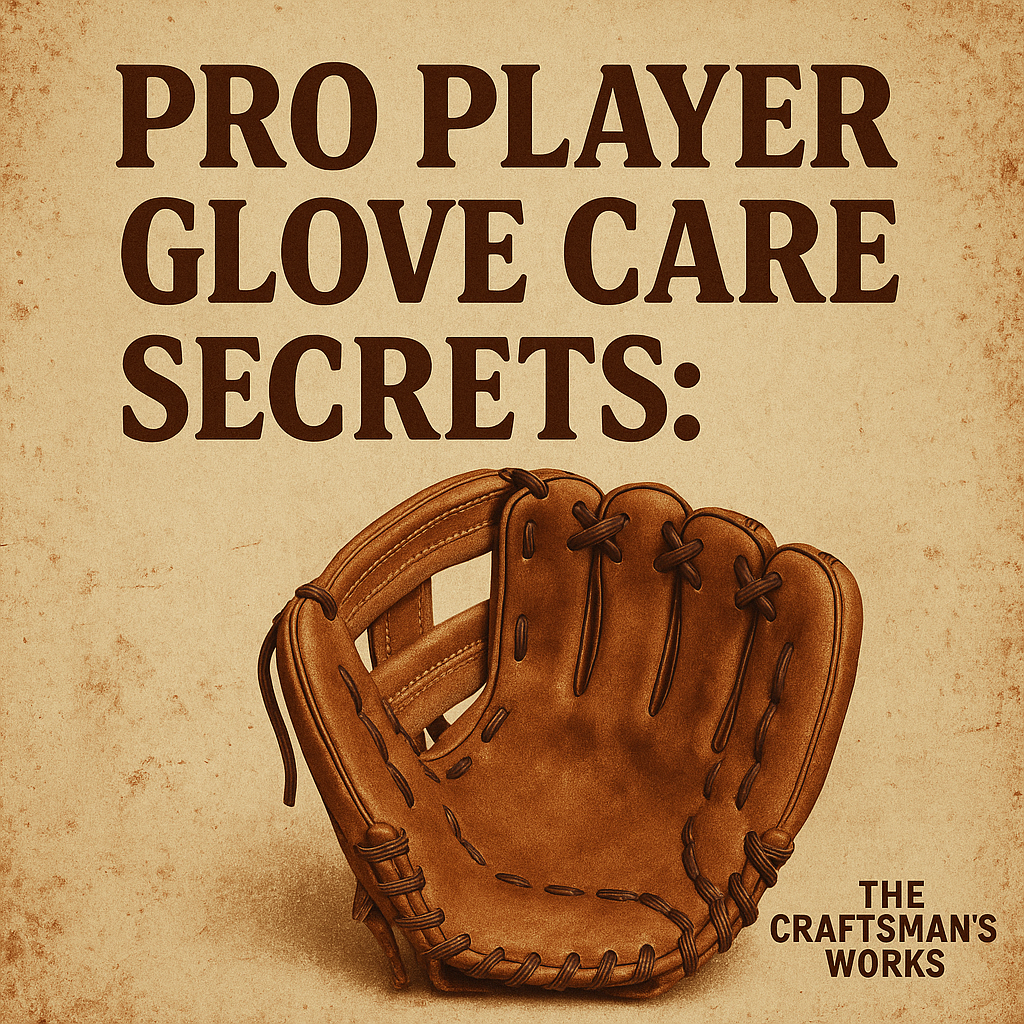
How to Date Your Rawlings Glove
How to Date Your Rawlings Glove
Unlocking the year your glove or mitt was made — with codes, markings, and what to look for
If you’ve ever held a vintage Rawlings glove and wondered, “How old is this thing?”, you’re not alone. Among glove collectors and enthusiasts, dating a Rawlings mitt is almost like detective work. Fortunately, with a combination of historical knowledge and careful observation, you can often pin down a glove’s manufacturing era with surprising accuracy.
In a recent TikTok video, we walked through how to read the subtle markings on Rawlings gloves — from dot codes to BLACKHORSE letter codes — to estimate when they came off the line. (Watch that video here: https://www.tiktok.com/@thecraftsman84/video/7443625043097242926) Let’s break it down step-by-step so you can date your glove too.
1. Understand Rawlings’ Dating Systems
The key foundation for dating Rawlings gloves comes from the system the company used over the years:
Dot Code Era (1971–1983)
Rawlings began using “dot codes” in 1971. These were small dots stamped on the back of the thumb, with the number of dots corresponding to particular years. For example:
-
1 dot = 1971, 1976, 1981
-
2 dots = 1972, 1977
-
3 dots = 1973, 1978, 1983
-
4 dots = 1974, 1979
-
5 dots = 1975, 1980
This system was used up through 1983.
One important caveat: these dot markings were originally intended for internal inventory and factory control, not for public dating. So while helpful, they’re not foolproof.
BLACKHORSE Code Era (1984–1997)
Starting in 1984, Rawlings switched to a BLACKHORSE letter code system. This used three letters followed by two digits. The first letter denotes the year, the next two letters the month, and the two numbers represent the tannery (where the leather came from).
Here’s the conversion key:
| Letter | Digit |
|---|---|
| B | 1 |
| L | 2 |
| A | 3 |
| C | 4 |
| K | 5 |
| H | 6 |
| O | 7 |
| R | 8 |
| S | 9 |
| E | 0 |
| Tannery Code | Tannery / Leather Source |
|---|
| 01 | Horween Leather Co. |
| 09 | Tennessee Tanning Co. |
| 14 | Gutmann Tannery Co. |
| 29 | Made in the Philippines |
For example, if a glove has the BLACKHORSE code EEH01, that might translate into a specific year (E = 0 or ’90 in the system), month (EH = 06 or June in the system), and tannery (01 = Horween).
Return to Dot Codes & Hybrid Systems (1998 onward)
In 1998, Rawlings reintroduced the dot code system (e.g. 3 dots = 1998; 4 dots = 1999; 5 dots = 2000; 1 dot = 2001; 2 dots = 2002) for a few years.
Final Return to the BLACKHORSE system
By 2003, Rawlings had adopted a hybrid variant: a 4-letter BLACKHORSE code plus a two-digit tannery code. In this new system, the first two letters represent the year, the second two letters represent the month, and the last two numbers are the tannery code.
So, BLEO01 would be BL = 12 or 2012; EO would be 07 or July; and 01 would be Horween.
2. Inspect Your Glove’s Stamping Carefully
Now that you know the systems, here’s how to apply them by examining your glove.
-
Check the back of the thumb (inside or backside) — this is where Rawlings placed dot codes.
-
Look near the wrist strap area or inside the webbing for letter codes (the BLACKHORSE system).
-
Be aware of wear, fading, or leather replacement — these can obscure or erase markings over time.
-
Use a magnifying glass and good lighting — sometimes the dots or letters are faint or partially rubbed off.
If there are no dots or letter codes, it becomes harder (though not always impossible) to date the glove. In such cases, you may look at model number styles, label design, materials, or logo type as secondary clues.
3. Use Supporting Clues & Model Changes
Sometimes the code system isn’t apparent or legible. In those cases, these additional clues help:
-
Model Numbers & Name Imprints — specific models (PROS, PRO, GG, etc) appeared in certain decades.
-
Logo Styles — how “Rawlings” font changed over time.
-
Leather Type & Quality — some glove leathers and finishes were more common in certain eras.
-
Construction Details — lacing styles, padding, stitching, and face materials evolved over the decades.
These secondary clues, combined with your best guess from codes, can help you narrow the window more tightly.
4. Don’t Forget: It’s Not Perfect, But It’s Educated Guessing
Because many gloves have been re-laced, re-labeled, or refinished over time, none of these methods are 100% certain. Also, remember that dot codes were originally for factory inventory, so some gloves may have inconsistencies.
But combining multiple clues — codes, model traits, leather style — you can often narrow it to within a few years.
5. Why Dating Your Glove Matters
-
Historical Value & Collector Interest — if your glove is vintage, an accurate date can help with valuation.
-
Restoration & Maintenance Approach — knowing the glove’s era helps you choose the right care routines (older leather might dry faster).
-
Story & Legacy — owning a glove from a particular era gives it a narrative: “this was made in the same year as Nolan Ryan’s no-hitter,” etc.
Conclusion: Start with the Dots or Code, Then Layer Your Evidence
Dating a Rawlings glove is part science, part detective work, and part experience. Start by looking for dot or BLACKHORSE codes, then layer in model, materials, and logos to refine your estimate. Use the video walkthrough as a visual companion while you inspect your glove.
If you ever want help identifying a glove you’re working on, feel free to send photos — I’d love to help you pin down its origin.
👉 Also — for any glove you’re restoring or preserving, check out our Glove Lotion and Glove Salve to keep that old leather in its best shape as you uncover its history.
Updated Cheat Sheet (Full)
Rawlings Glove Dating — Complete Reference
| System / Era | Marking Location | Code Format | How to Interpret | Key Table / Notes |
|---|---|---|---|---|
| Dot Code (1971–1983) | Back of thumb | 1–5 dots | Corresponds to years in rotating pattern. | See original cheat sheet listing |
| BLACKHORSE (1984–1997) | Wrist strap, web, thumb area | 3 letters + 2 digits | Use letter-to-digit key for year & month, last two digits = tannery | Letter key: B=1, L=2, A=3, C=4, K=5, H=6, O=7, R=8, S=9, E=0. Known tannery codes: 01 Horween, 09 Tennessee, 14 Gutmann, 29 Philippines |
| Return to Dot (1998–2002) | Back of thumb | 3–5 dots | 3 = 1998, 4 = 1999, 5 = 2000, 1 = 2001, 2 = 2002 | Same dot code structure |
| Hybrid / Modern BLACKHORSE (2003+) | Inner web, wrist, palm area | 4 letters + 2 digits | First 2 letters = year, next 2 = month, last 2 digits = tannery code | Follows a modern variant of BLACKHORSE system |


